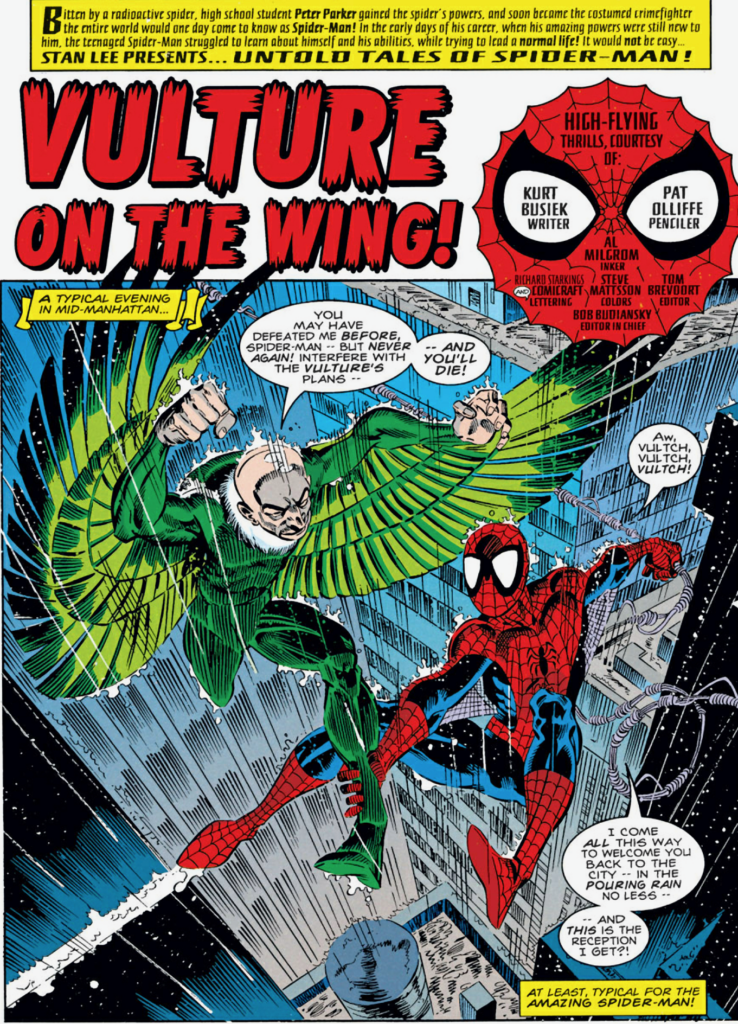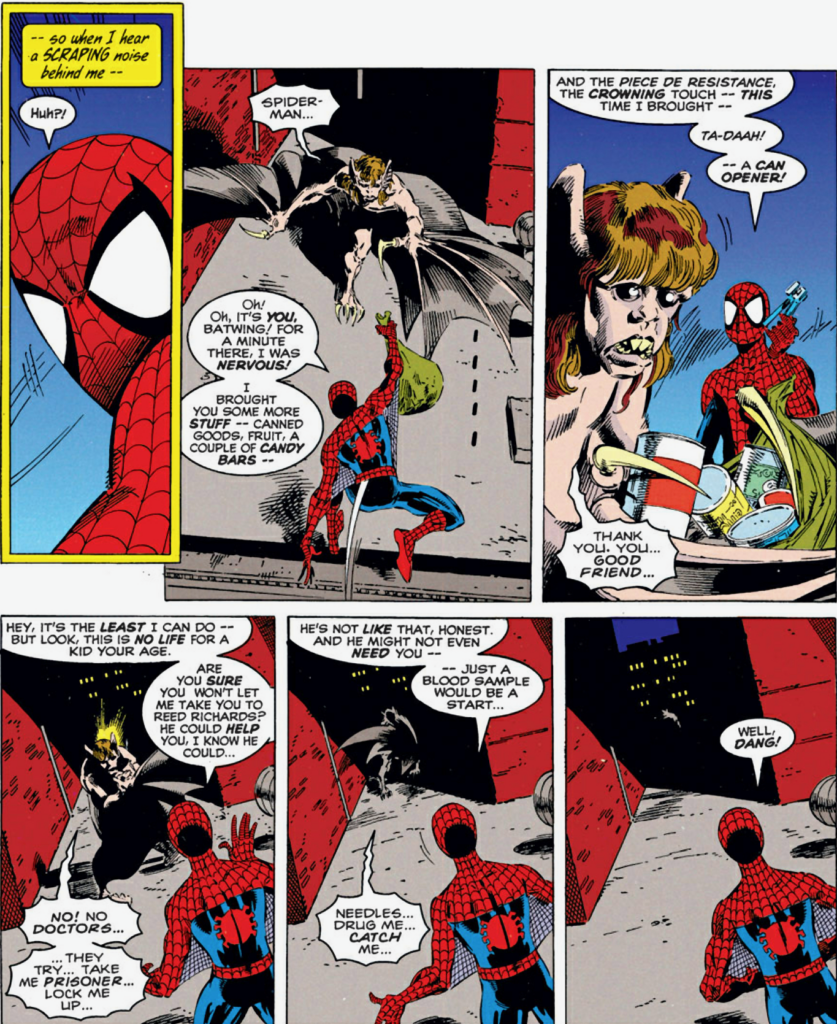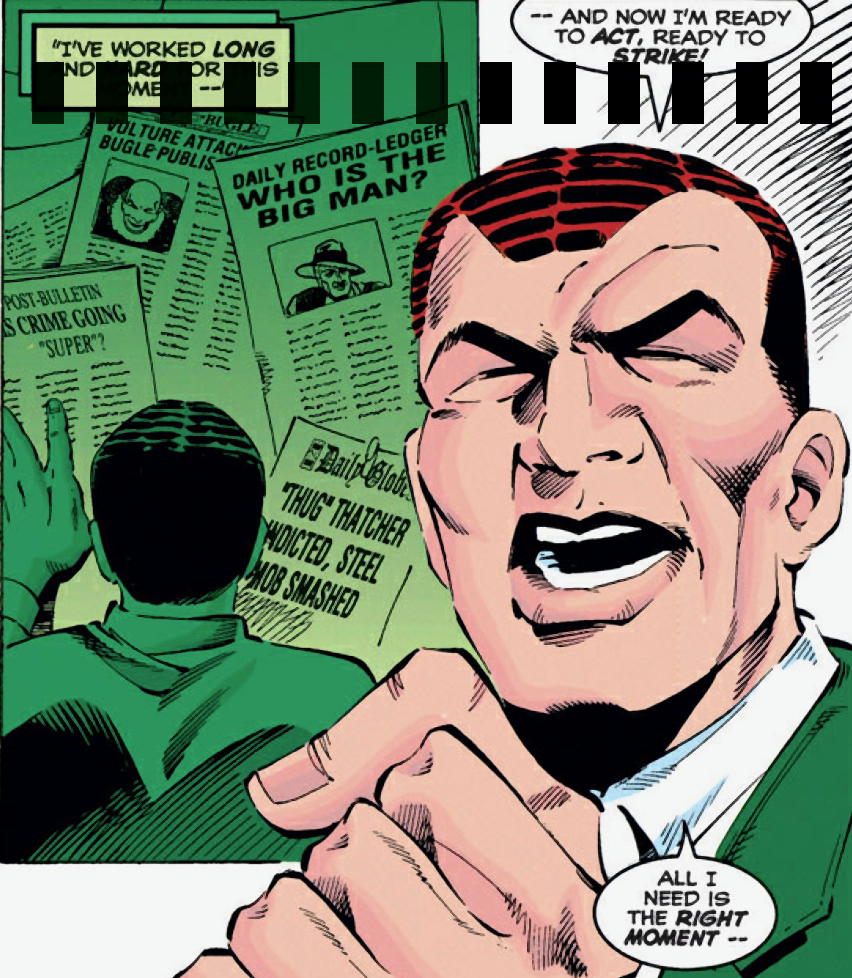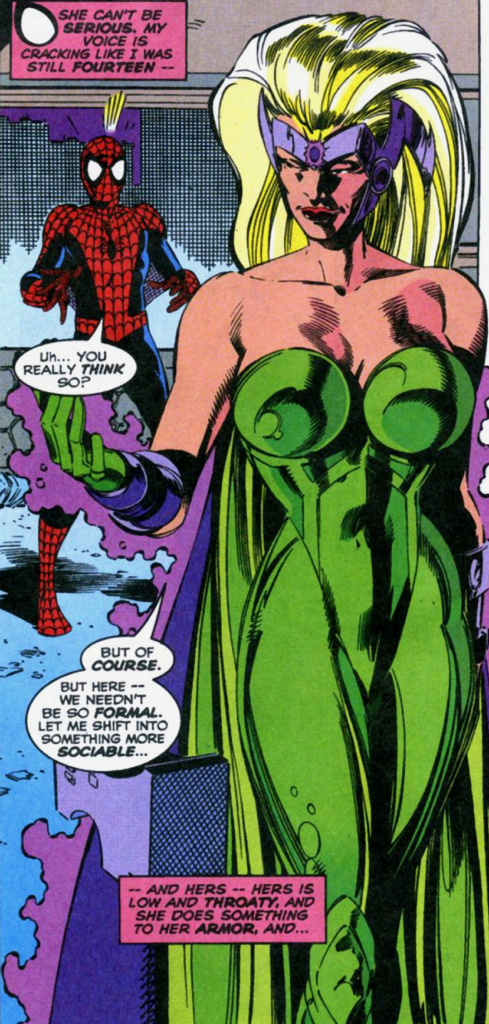
I’m going to start batch-posting UTOSM but not because it’s bad. Just because they’re all one-and-done stories that are fun to read but don’t really matter–and how can they? They take place during or between previously published issues of Amazing Spider-Man–they can’t change the overall narrative of the character because it’s already been written thirty years ago. (Of course, that never stopped X-Men from constantly changing timelines.)
So, to sum up the interesting things about these issues:

#5 is a Vulture story, and Pat Oliffe pays tribute to Steve Ditko’s often very bent legs. I always liked those. Something about them looks cool, even though they’re not anatomically accurate. Similarly, Kurt Busiek makes this a “everyone thinks Spidey committed a crime” issue–which was a standard Stan Lee storyline.
Issue #6 is a Human Torch team-up against Wizard.
Then, we have our first “self-referential” storyline. Although #7 is mostly Electro, it revisits the Batwing character from Untold Tales #2 and tells us Spider-Man has been feeding the kid ever since that issue.

The man who hires Electro in this issue is a (non-powered) scientist from the Lee/Romita era–making this issue a prequel to those issues. Cool.
Issue #8 has The Enforcers, and their story brews in a couple earlier issues–and shows us Norman Osborn’s early, pre-Green Goblin days, scheming in panels overlaid with green.

Issue #8 also adds a new villain to Spider-Man’s rogue’s gallery:

Headsman. He nearly unmasks Spider-Man.



It’s also part of the grand Stan Lee/Steve Ditko tradition of Spider-Man publicly running away from fights.
There’s also a multi-issue storyline of some kids from Peter Parker’s high school trying to figure out his secret identity–in response to a contest being run by J. Jonah Jameson.
Issue #9 has the first non-Oliffe art, a fill-in by Ron Frenz, that has both Lizard and Batwing.

Lots of Batwing in these early issues! In #9, he’s kind of a sidekick for Spider-Man.
At the very end we see the silhouette of Commanda–so that is kind of her first appearance–but she’s the main foil in #10.

She’s totally hot. She’s also a thief with some tiny robotic drones controlled by her crown. #10 plays with sexuality, which is a good idea for a teen-aged character who ought to be full of hormones.
Along the way, there are tons of Easter Eggs for folks who are very familiar with the Lee/Ditko issues–references to various ideas and events that happened in those magical early issues. They crammed so much into each comic back then that there’s lots of good story points to expand.
This continues to be one of the best Marvel books of its time.
